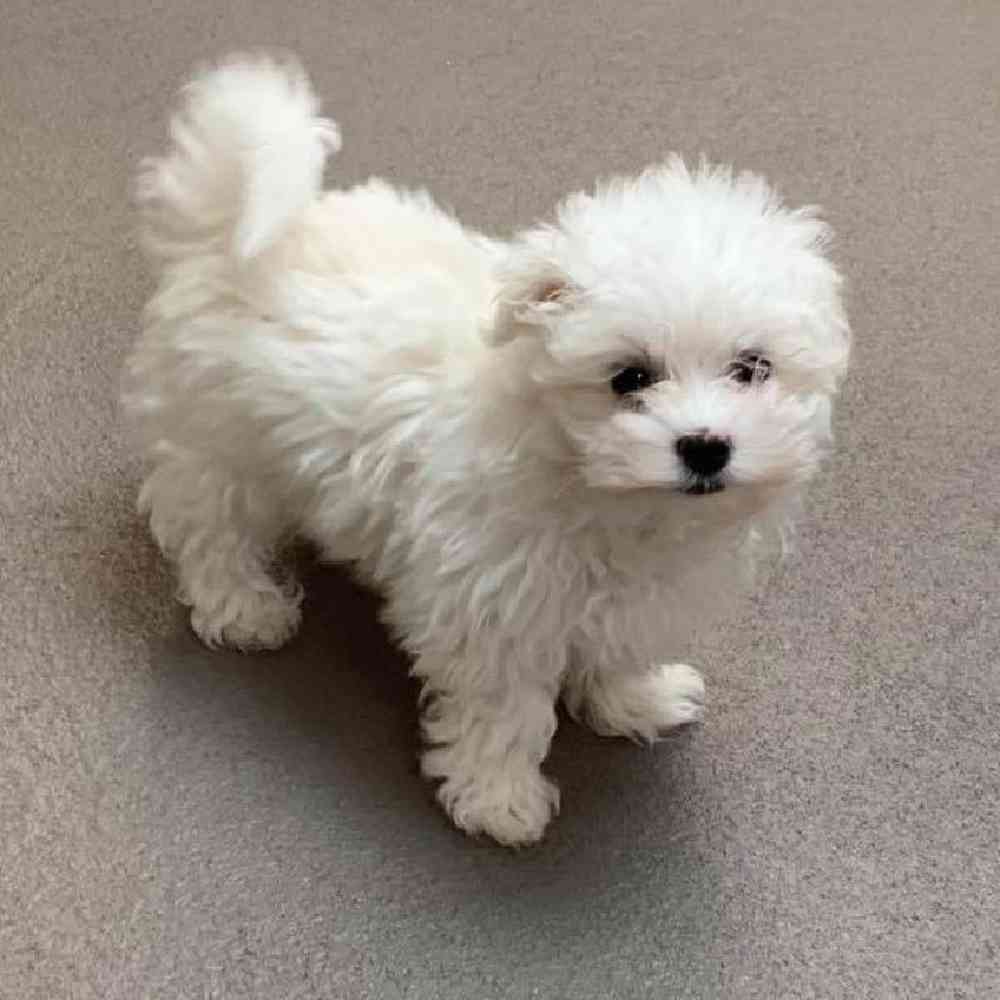
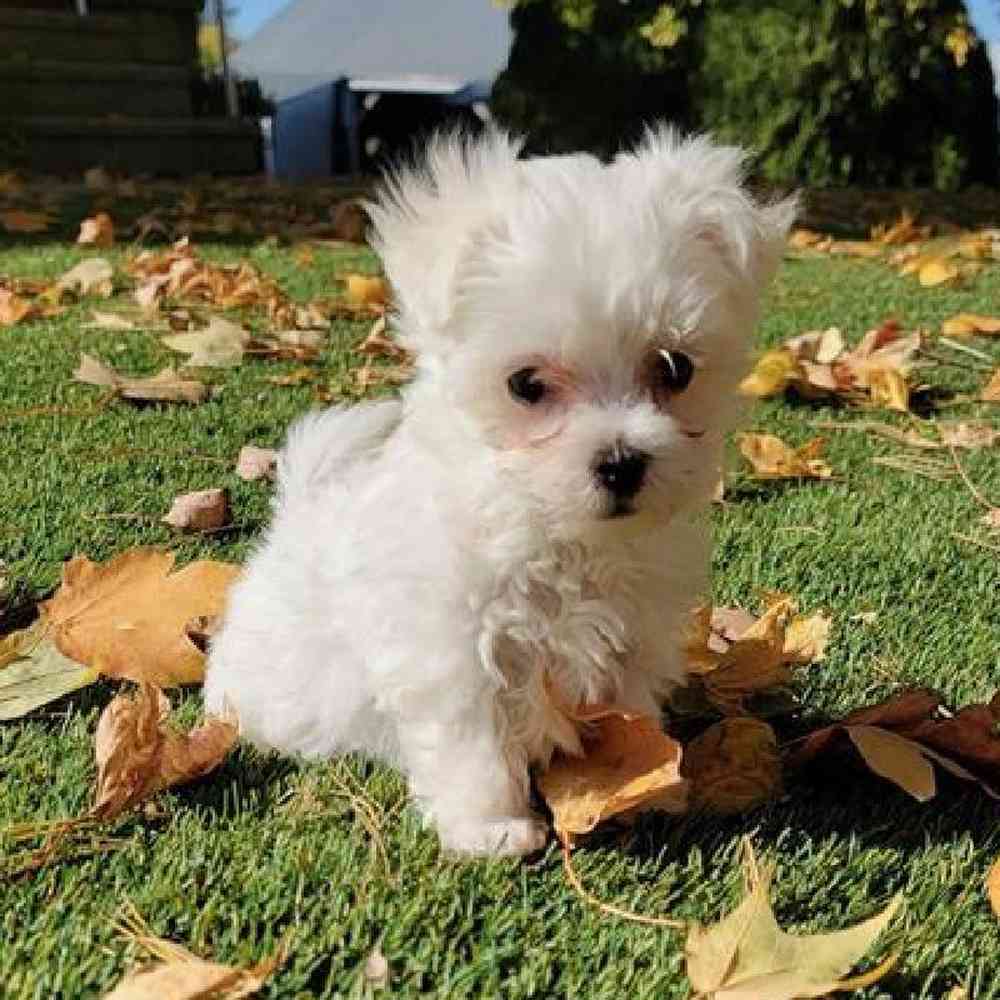
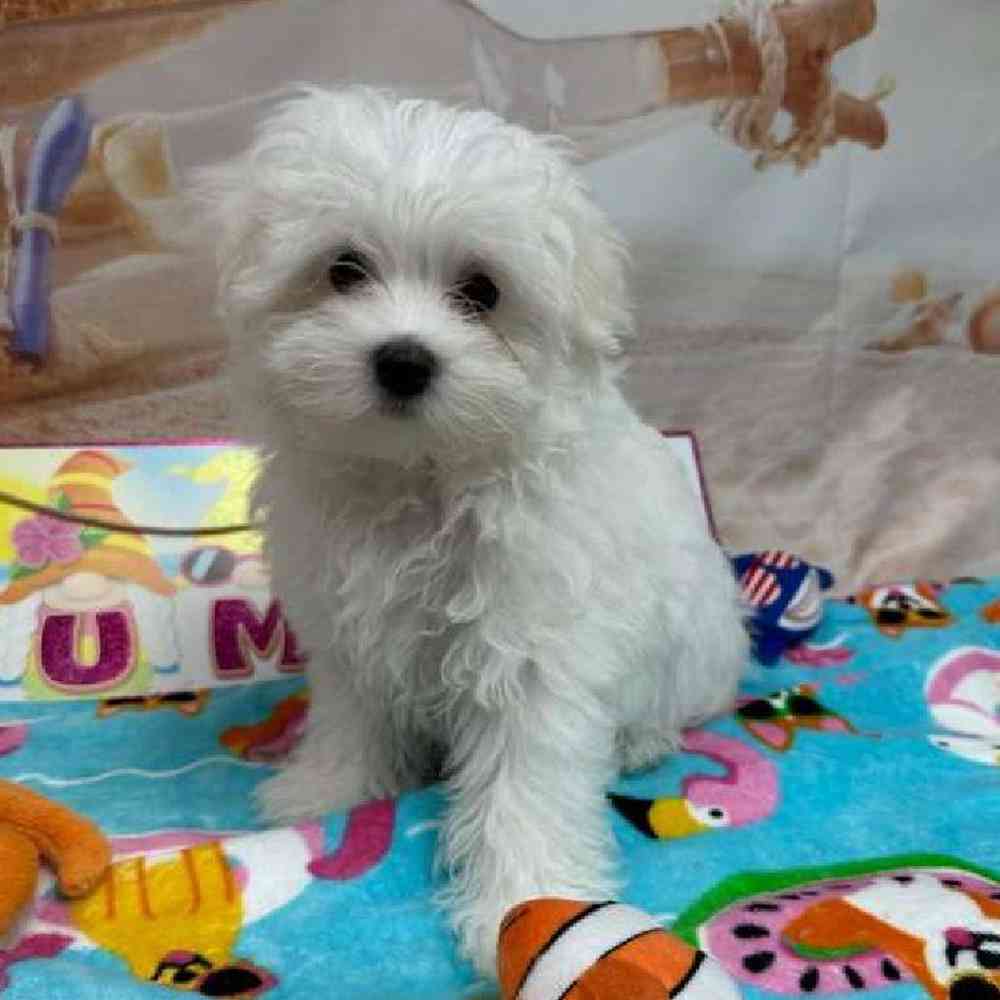
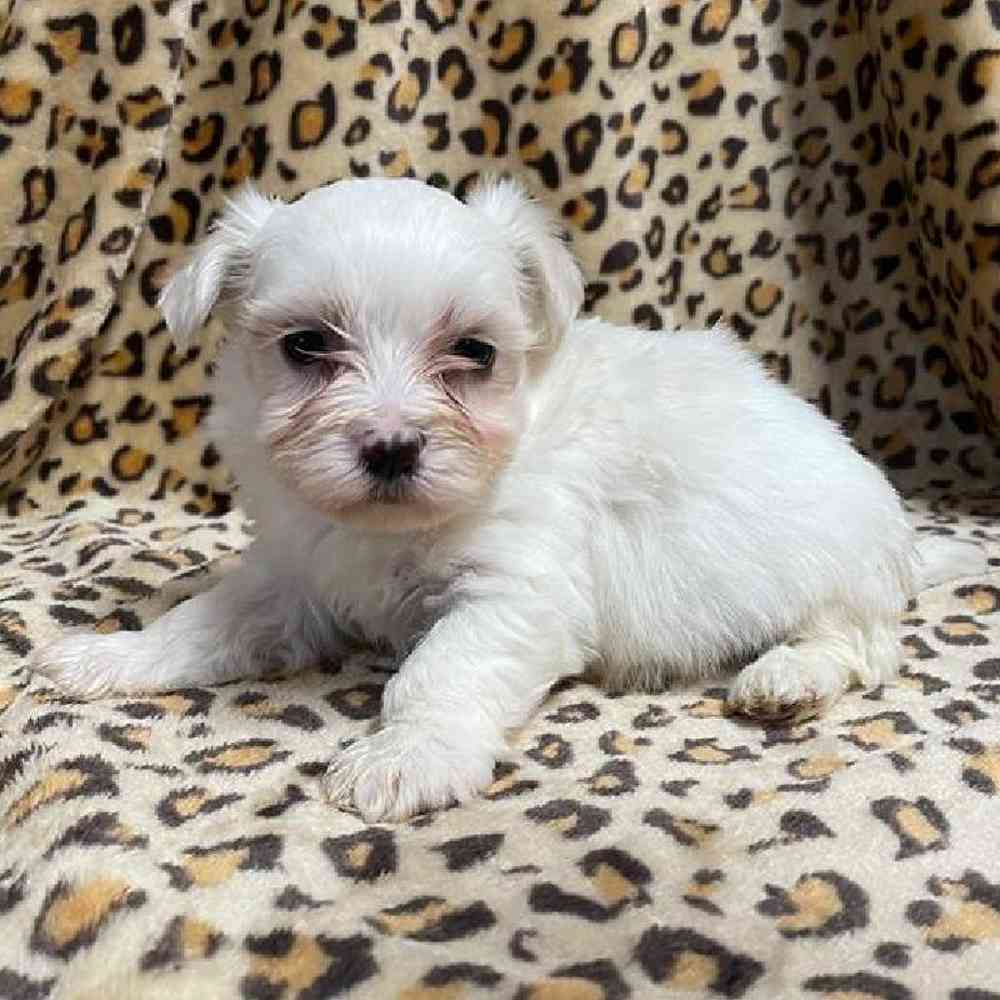
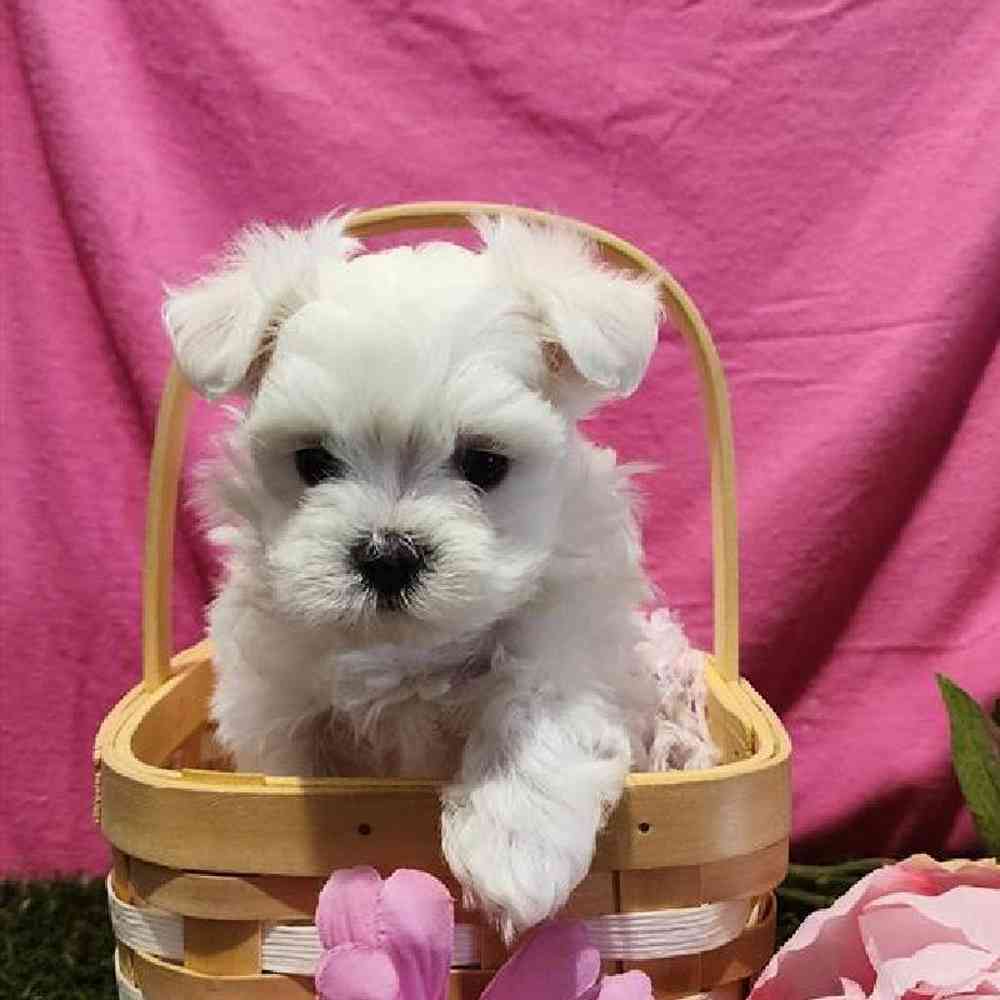
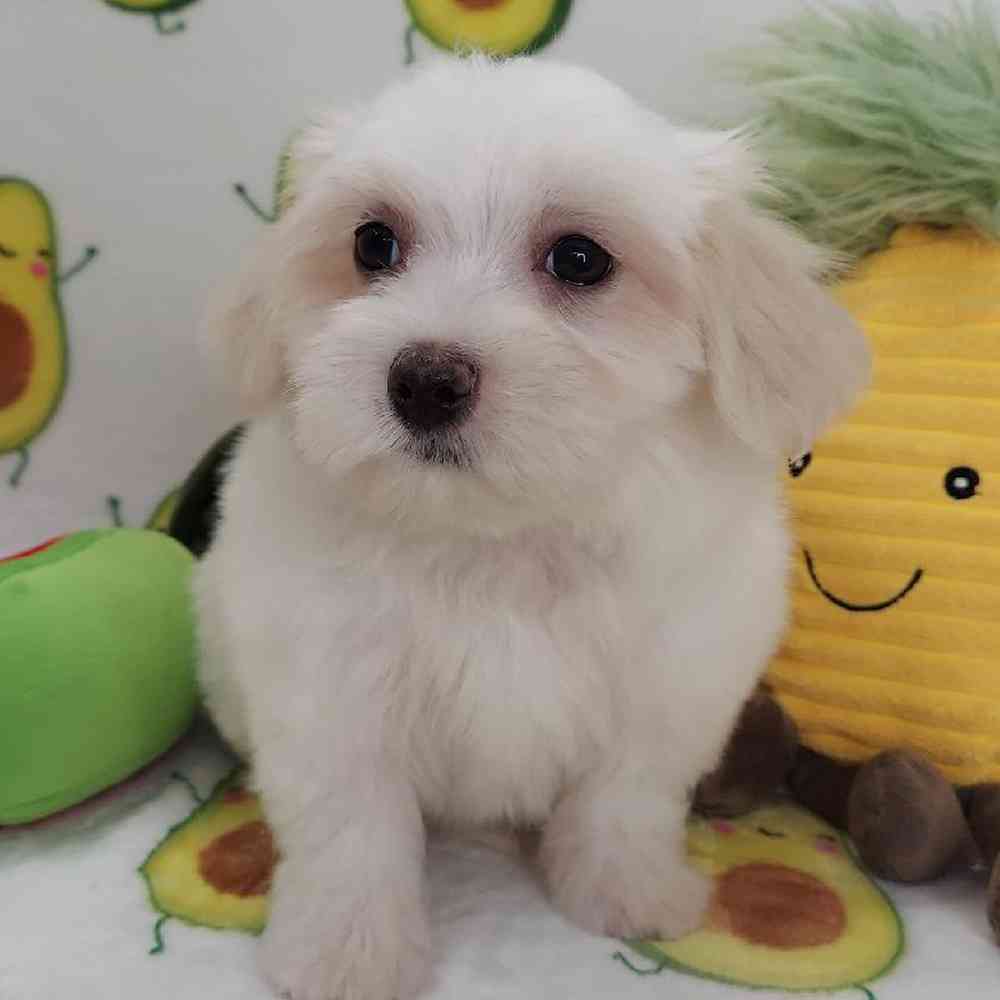
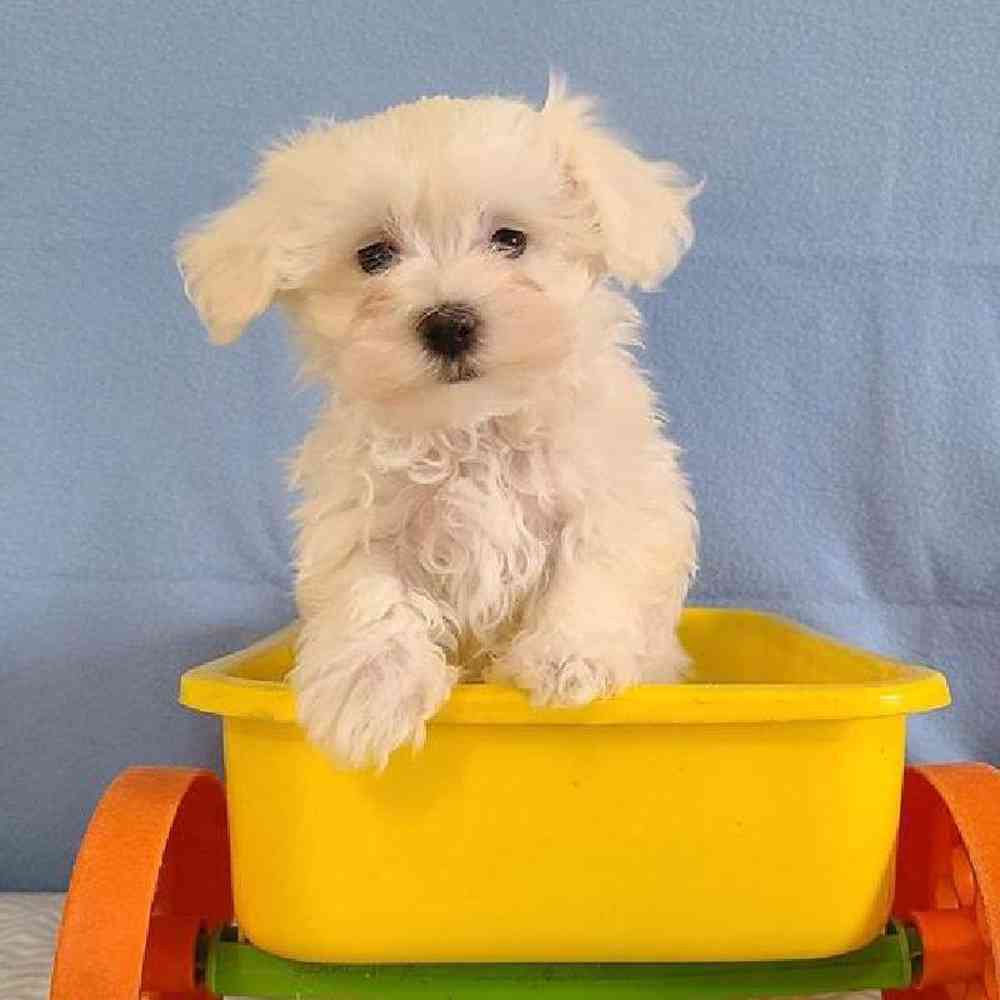
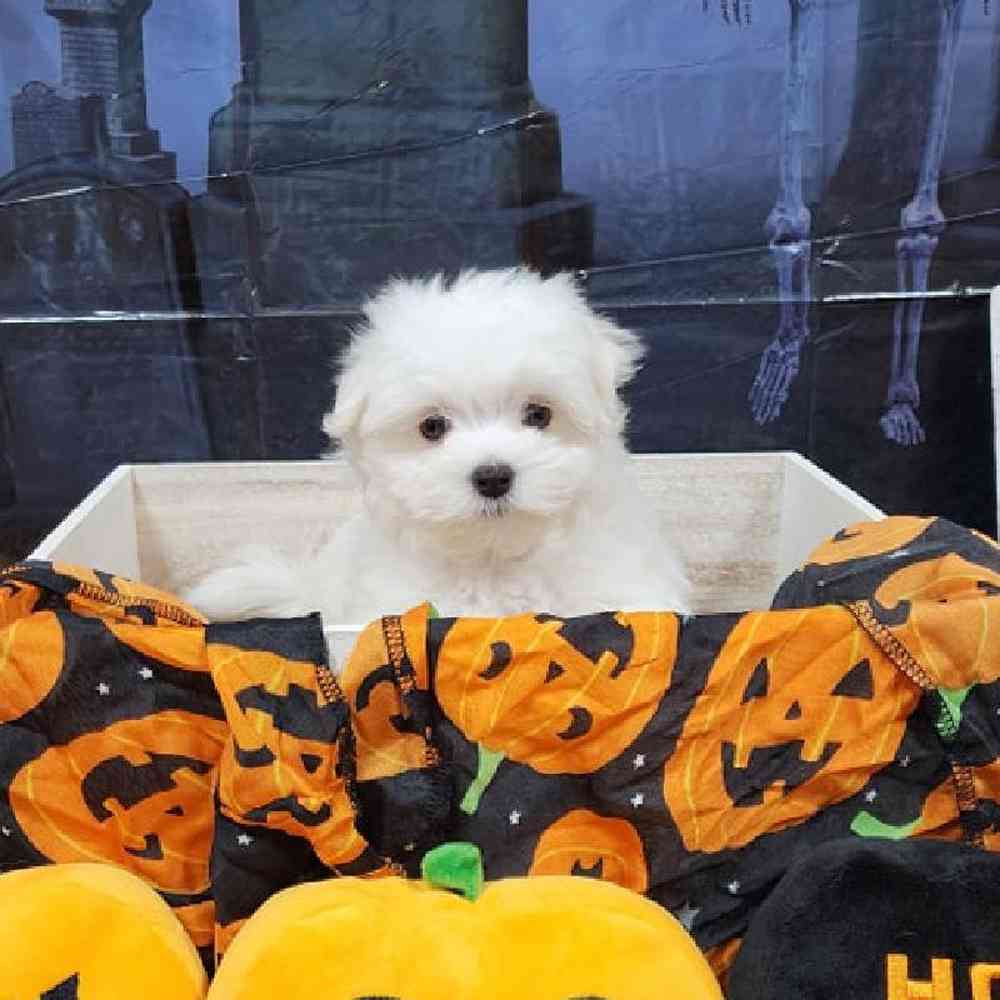
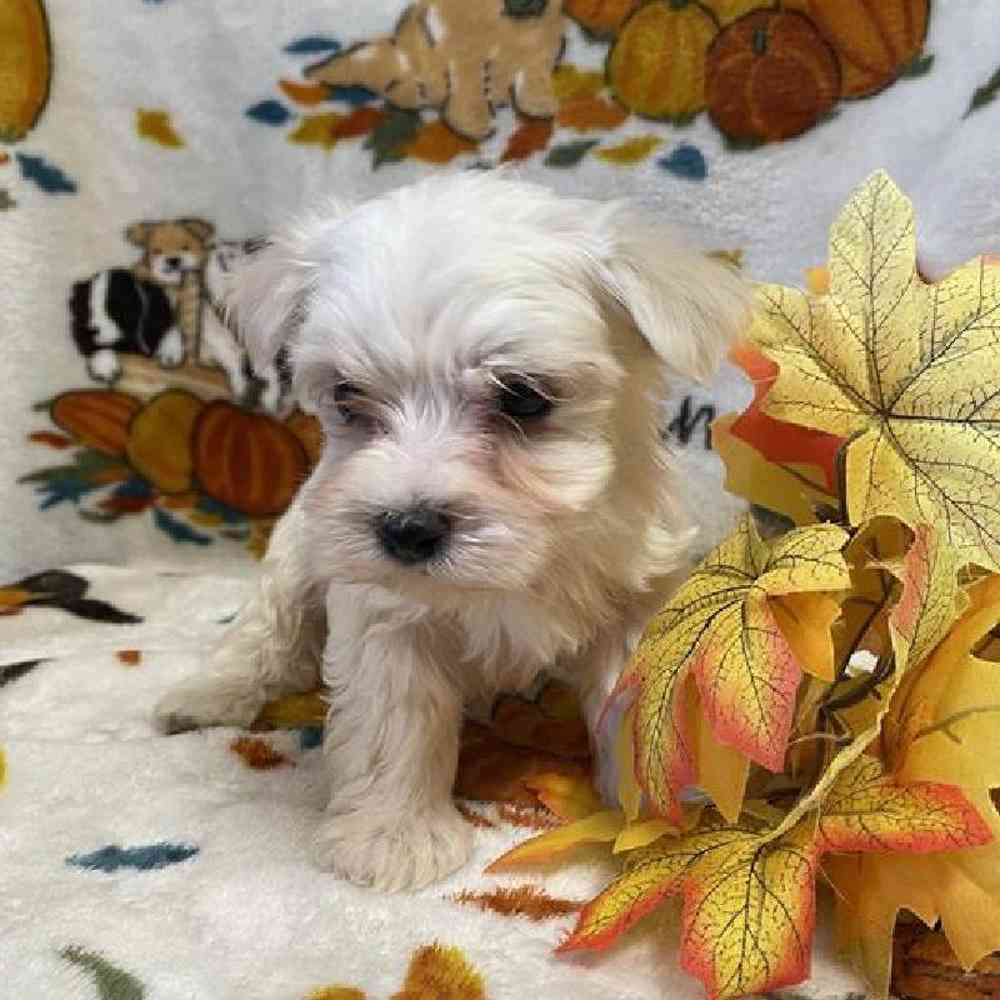
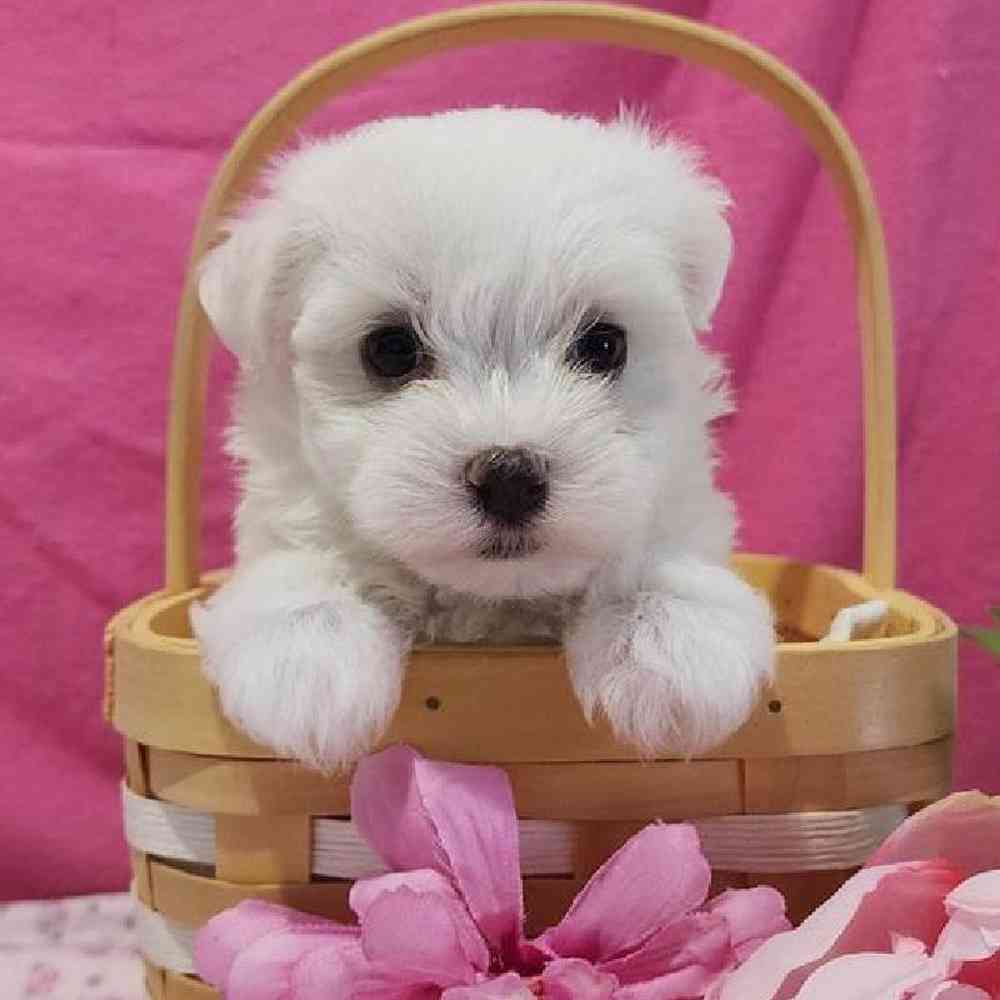
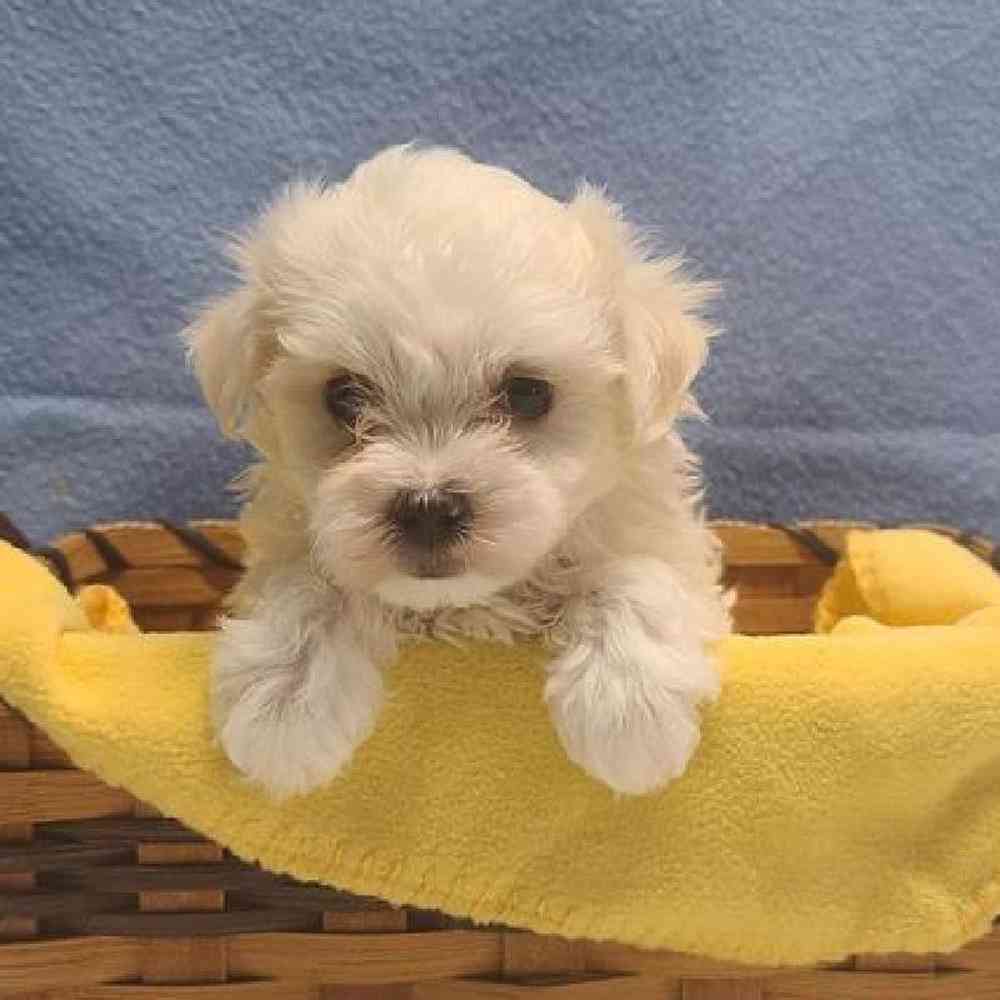
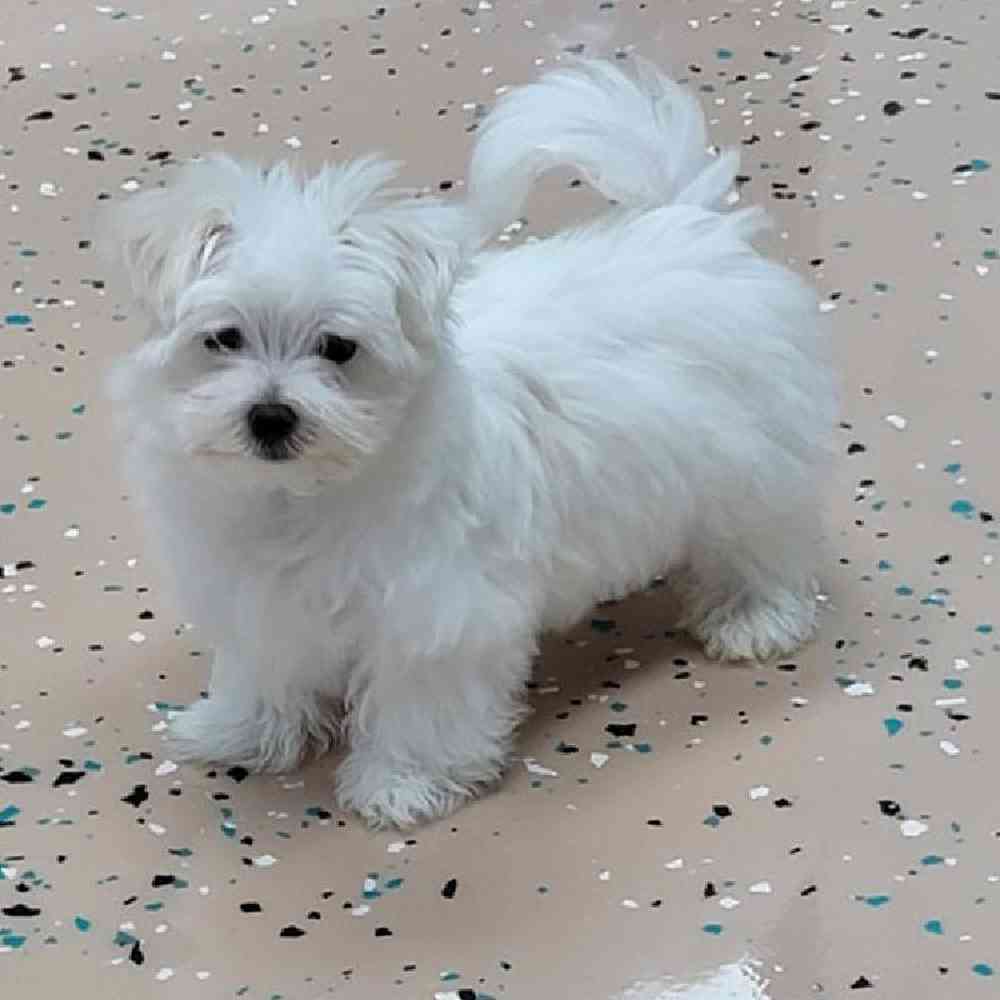
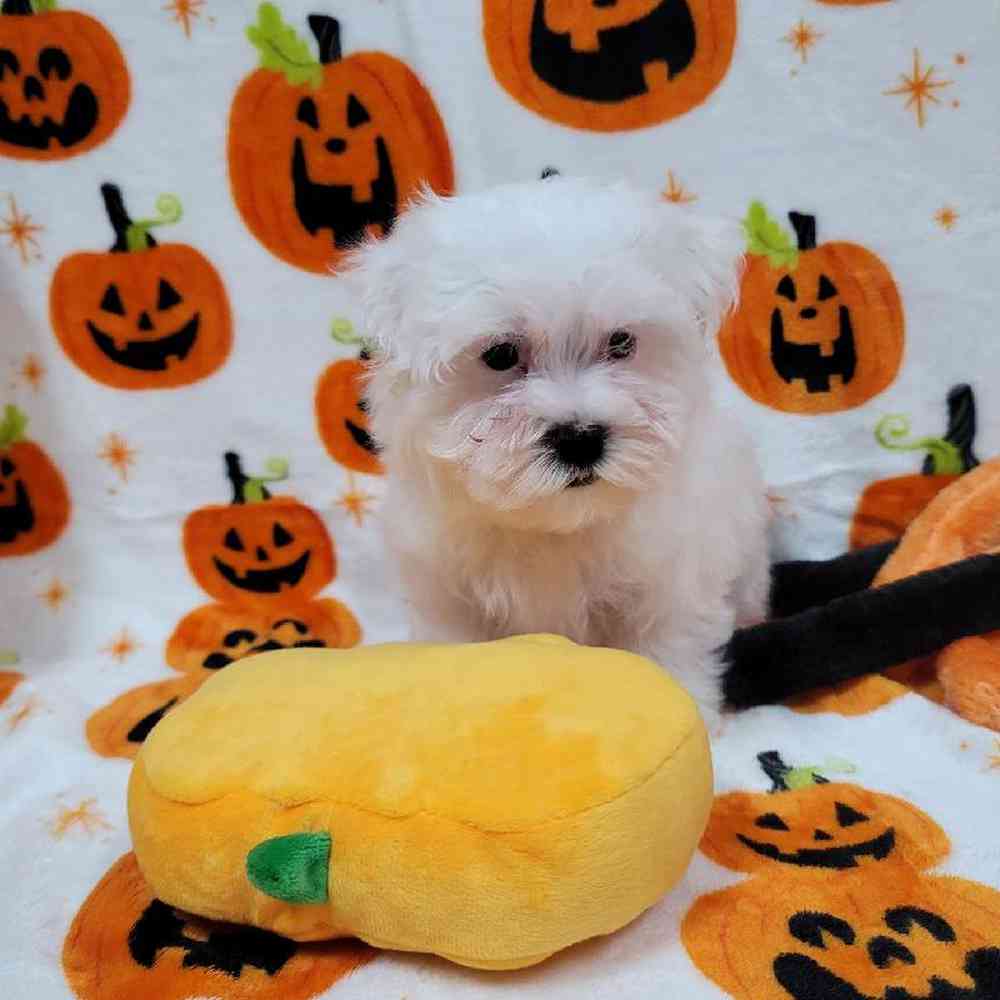

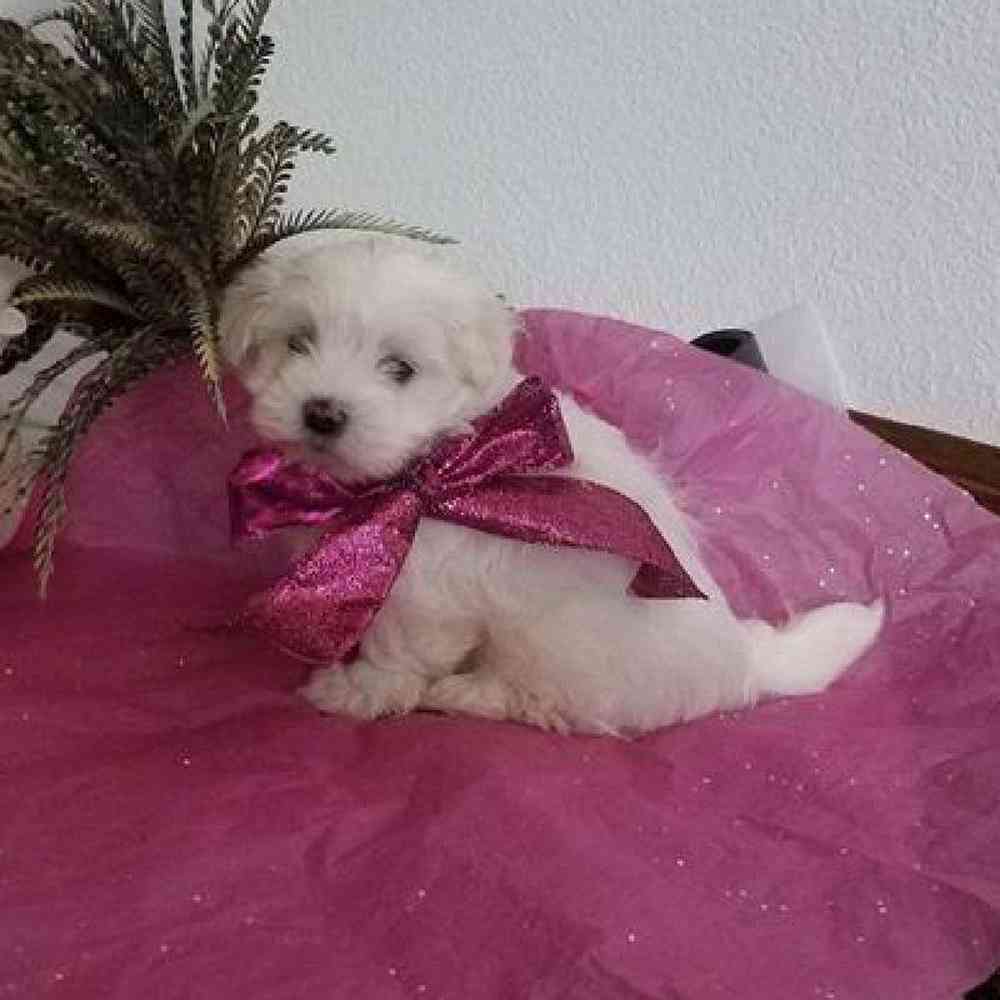












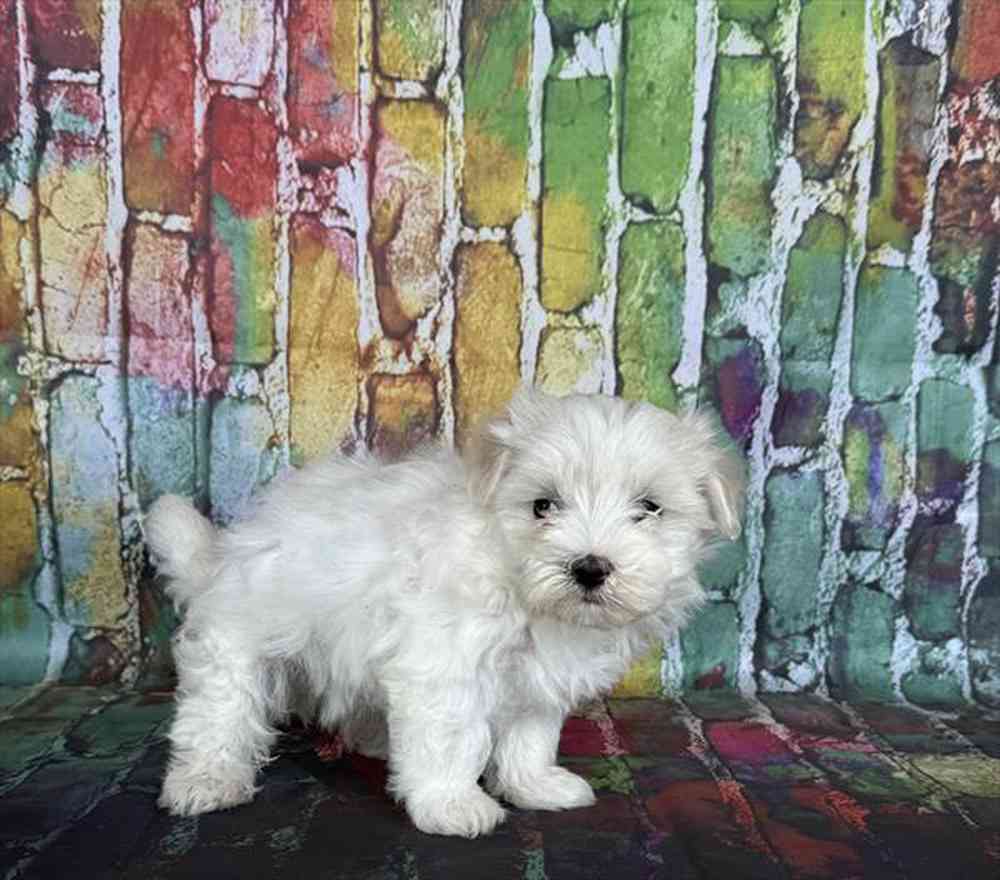
Apartment Friendly
Hypo Allergenic
AKC Registrable
Family Dog
Maltese
The tiny Maltese, “Ye Ancient Dogge of Malta,” has been sitting in the lap of luxury since the Bible was a work in progress. Famous for their show-stopping, floor-length coat, Maltese are playful, charming, and adaptable toy companions.
Available Pups
Puppy Knowledge
Breed Info
Group
Toy
Heritage
The origin of the Maltese is unknown, but references to this breed have been found in Ancient Greek and Roman literatures dating back to 500 BC. It is believed this breed was brought to England with the Crusaders returning home from the Mediterranean. The Maltese we know today is likely a crossbreed of the Poodle and Miniature Spaniel.
Personality
The Maltese is a friendly, sweet, playful, trusting and devoted to the family. Loving and lovable, your Maltese is highly intelligent and will be eager to learn from you. You need to be a calm, knowledgeable, and humane owner giving consistent and committed leadership to your Maltese using only motivational training methods.
Exercise/Energy Level
The Maltese is a playful breed, and requires a daily walk and off-leash play and running in a safe, fenced area. They also need mental stimulation to prevent boredom and destruction, so be sure to provide your Maltese with plenty of interactive toys that challenge their problem-solving skills.
Breed Standard
General Appearance
The Maltese is a toy dog covered from head to foot with a mantle of long, silky, white hair. He is gentle-mannered and affectionate, eager and sprightly in action, and, despite his size, possessed of the vigor needed for the satisfactory companion.
Size, Proportion, Substance
Weight under 7 pounds, with from 4 to 6 pounds preferred. Overall quality is to be favored over size.
Head
Of medium length and in proportion to the size of the dog. The skull is slightly rounded on top, the stop moderate. The drop ears are rather low set and heavily feathered with long hair that hangs close to the head. Eyes are set not too far apart; they are very dark and round, their black rims enhancing the gentle yet alert expression. The muzzle is of medium length, fine and tapered but not snipy.The nose is black. The teeth meet in an even, edge-to-edge bite, or in a scissors bite.
Neck, Topline, Body
Sufficient length of neck is desirable as promoting a high carriage of the head. Body--Compact, the height from the withers to the ground equaling the length from the withers to the root of the tail. Shoulder blades are sloping, the elbows well knit and held close to the body. The back is level in topline, the ribs well sprung. The chest is fairly deep, the loins taut, strong, and just slightly tucked up underneath.
Leg and Feet
Legs are fine-boned and nicely feathered. Forelegs are straight, their pastern joints well knit and devoid of appreciable bend
Forequarters
Legs are fine-boned and nicely feathered. Forelegs are straight, their pastern joints well knit and devoid of appreciable bend
Hindquarters
Hind legs are strong and moderately angulated at stifles and hocks. The feet are small and round, with toe pads black. Scraggly hairs on the feet may be trimmed to give a neater appearance.
Coast and Color
The coat is single, that is, without undercoat. It hangs long, flat, and silky over the sides of the body almost, if not quite, to the ground. The long head-hair may be tied up in a topknot or it may be left hanging. Any suggestion of kinkiness, curliness, or woolly texture is objectionable. Color, pure white. Light tan or lemon on the ears is permissible, but not desirable.
Coat
The coat is single, that is, without undercoat. It hangs long, flat, and silky over the sides of the body almost, if not quite, to the ground. The long head-hair may be tied up in a topknot or it may be left hanging. Any suggestion of kinkiness, curliness, or woolly texture is objectionable
Gait
The Maltese moves with a jaunty, smooth, flowing gait. Viewed from the side, he gives an impression of rapid movement, size considered. In the stride, the forelegs reach straight and free from the shoulders, with elbows close. Hind legs to move in a straight line. Cowhocks or any suggestion of hind leg toeing in or out are faults.
Temperament
Gentle, Playful, Charming
Overview
About
Maltese are affectionate toy dogs weighing less than seven pounds, covered by a long, straight, silky coat. Beneath the all-white mantle is a compact body moving with a smooth and effortless gait. The overall picture depicts free-flowing elegance and balance. The irresistible Maltese face—with its big, dark eyes and black gumdrop nose—can conquer the most jaded sensibility. Despite their aristocratic bearing, Maltese are hardy and adaptable pets. They make alert watchdogs who are fearless in a charming toy-dog way, and they are game little athletes on the course. Maltese are low-shedding, long-lived, and happy to make new friends of all ages. Sometimes stubborn and willful, they respond well to rewards-based training.
History
Malta lies 60 miles due south of Sicily, in the middle of the Mediterranean Sea. In ancient times, the island was a crossroads for pilgrims, mariners, and wealthy merchants from three continents. As far back as 3500 B.C. Malta was a thriving seaport and a seat of finance and culture. During a 2,000-year period beginning in 1500 B.C. this strategic gateway was conquered and occupied by successive waves of seafaring empire-builders—Phoenicians, Greeks, Carthaginians, Romans, Arabs, and Normans—for whom the island was a clearinghouse for precious commodities, such as spices, silks, gemstones, and a certain little white lapdog favored by leisured ladies the world over. It is likely that the Maltese was introduced to Malta by the Phoenicians, who ruled the Mediterranean before the rise of Greece. The Greeks of the fourth and fifth centuries B.C. were fascinated by the Maltese’s geometric beauty and left behind a rich legacy of breed-specific treasures: The “Melitaie Dog” is depicted on Golden Age ceramics, and Aristotle refers to it as “perfectly proportioned,” notwithstanding a diminutive stature. Aristocrats of the Roman Empire perfected the Maltese’s role of status symbol and fashion statement. A Roman matron wasn’t fully dressed without a “Roman Ladies’ Dog” peeking out of her sleeve or bosom. Even the crusty Emperor Claudius succumbed to the breed’s charm. The Maltese was a persistent motif in Roman myths, poems, and fables in which the breed symbolized loyalty. One legend concerns Saint Paul, the peripatetic apostle of early Christianity. The Acts of the Apostles recounts Paul’s shipwreck on Malta, where he miraculously healed the father of the island’s Roman governor, Publius. The grateful Publius, so the story goes, presented Paul with a Maltese. After the fall of Rome, it was Chinese breeders who kept the Maltese from extinction during Europe’s Dark Ages. The Chinese effected judicious crosses with their native toy breeds and exported a more refined Maltese back to Europe. With its immense charm and eye-catching looks, it comes as no surprise that the Maltese was a fixture at dog shows from the very beginning. At New York’s first Westminster show, in 1877, the breed was exhibited as the Maltese Lion Dog.
Standard
The Maltese is a toy dog covered from head to foot with a mantle of long, silky, white hair. He is gentle-mannered and affectionate, eager and sprightly in action, and, despite his size, possessed of the vigor needed for the satisfactory companion. Size: Weight under 7 pounds, with from 4 to 6 pounds preferred. Overall quality is to be favored over size.
Nutrition
The Maltese should do well on a high-quality dog food, whether commercially manufactured or home-prepared with your veterinarian’s supervision and approval. Any diet should be appropriate to the dog’s age (puppy, adult, or senior). Some dogs are prone to getting overweight, so watch your dog’s calorie consumption and weight level. Treats can be an important aid in training, but giving too many can cause obesity. Learn about which human foods are safe for dogs, and which are not. Check with your vet if you have any concerns about your dog’s weight or diet. Clean, fresh water should be available at all times.
Grooming
The long, white coat of the Maltese is eye-catching and glorious. It requires daily gentle brushing and combing to the skin to prevent mats and tangles. Maltese should also have regular baths and coat conditioning to keep their hair looking its best. They have fast-growing nails that should be trimmed regularly. Check their ears weekly, and remove any excess hair or wax and any accumulated debris. Because Maltese are prone to dental disease as they get older, their teeth should be brushed frequently—ideally each time their coat is brushed. If the dog has excessive tear-staining around the eyes , a visit to the veterinarian to determine a possible cause is recommended.
Exercise
Maltese are full of energy but require only occasional exercise to keep them healthy and happy. Daily walks with their owner or bouncing around in their fenced yard, or even indoors, will usually suffice to keep them fit.
Training
Maltese are very intelligent, and in centuries of being companions to humans they have learned how to get exactly what they want from their people. It is important to be consistent with their training. Maltese are athletic and talented and make a fun choice as competitive companions in dog sports such as obedience or agility. They can be stubborn and determined, but they respond well to positive training methods.
Health
The Maltese is a healthy breed with few health issues, and will usually live well into the double digits. Responsible breeders screen their stock for health conditions such as luxating patella and heart anomalies such as PDA (patent ductus arteriosus). It is recommended that Maltese puppies be bile-acid tested to rule out congenital liver issues such as liver shunt and microvascular dysplasia (MVD). There have been reported incidences of Maltese developing encephalitis (aka as GME). At this time, there is no screening test available. The American Maltese Association is working with researchers to come up with answers and perhaps a genetic test in the near future. As in all toy breeds, dental maintenance is important, and Maltese should have their teeth brushed daily with a toothpaste specially formulated for dogs, as well as routine cleanings at the vet.
Trivia
Interesting To Know
The Maltese has been known as "Canis Melitaeus", the "ancient dog of Malta", the "Roman ladies' dog", and the "Maltese lion dog" The Greeks erected monuments to the Maltese The Roman governor of Malta, Publius, had a Maltese named Issa during the time of the Apostle Paul









